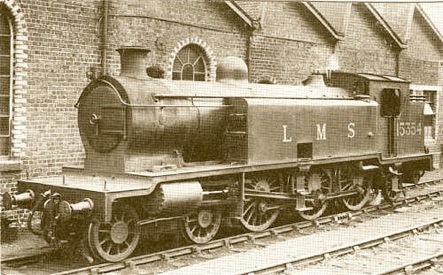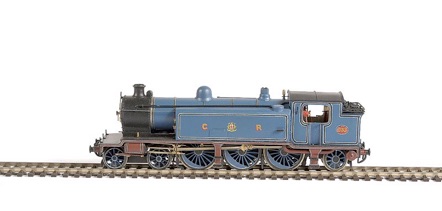100 years ago - March 1918
CALEDONIAN RAILWAY 944 CLASS 4-6-2T

100 years ago - March 1918
CALEDONIAN RAILWAY 944 CLASS 4-6-2T
The drawing published by The Engineer on March 23, 1918 is of the then new Caledonian Railway 944 Class. They were 4-6-2T passenger tank locomotives designed by William Pickersgill and built in 1917 at the North British Locomotive Company's Hyde Park Works in Glasgow. (Click on drawing to download)
The Caledonian Railway had a successful series of small 0-4-4T passenger tank engines, and the 12 locomotives of the 944 Class were their only large passenger tanks. They shared much of their design with the contemporary 60 Class 4-6-0s. They were originally used on the Inverclyde route where they were nicknamed 'Wemyss Bay Pugs' by enginemen.

Modellers have a choice of liveries for these engines. The locomotives passed into the ownership of the London, Midland and Scottish Railway in 1923 and were repainted from Caledonian blue into LMS crimson lake livery. Within a few years this gave way to lined black livery.
They were replaced on the Inverclyde line by LMS Fowler and Fairburn 2-6-4Ts and by the time of Nationalisation in 1948 the surviving locomotives were all allocated to Beattock shed, primarily for banking duties on Beattock bank. They were withdrawn and scrapped between 1946 and 1953.
With their outside Stephenson’s valve gear, these locos could make purposeful, impressive and attractive models. The colour illustration (below) is of a kit built model railway engine in Caledonian blue.
Drawing courtesy of Grace's Guide to British Industrial History.
Click on drawing to download.

“The engines are of large size and designed to exert a tractive force at 75 per cent, of the boiler pressure of 18,260 lb. The boiler contains superheating apparatus, and piston valves actuated by Stephenson's link motion are employed for distributing steam to the cylinders. The latter are fitted with by-pass valves which connect both ends of each cylinder, the arrangement being the same as that already described in the case of the 4-6-0 type express engine. The pistons are fitted with tail rods working in tubular casings attached to the front covers. The design of the connecting rods' big ends should be specially noted, as it is quite a new one in Caledonian locomotive practice. It will be seen that there is attached to the crank-pin of the trailing coupled wheels a short return crank with rod extending rearwards. This provides motion for the mechanical lubricator, which latter is placed inside the cab”
•Cylinders: diameter, 19.5 ins.; stroke, 26 ins.
•Wheels: front bogie, diameter, 3 ft. 6 ins; coupled, 5 ft. 9 ins.; hind bogie, 3 ft. 6 ins.
•Wheel-base: rigid, 13 ft. 3 ins.; total, 33ft 1in.
•Working pressure, 170 lb. per sq. in.
•Fire grate area, 21.5 sq. ft.
•Tubes 1,395 sq. ft.; firebox, 121 sq. ft.; superheater, 220 sq. ft . total, 1,736 sq. ft.
“The superheater snifting valves are located in a casing behind the chimney, and these close automatically when the regulator is opened. In working order the engine weighs 90 tons 13 cwt., and of this 55 tons 1 cwt. are carried by the coupled wheels, and are, therefore, available for adhesion. The tank capacity is 1,880 gallons of water, and a fuel space of 135 cubic ft. is provided. The boiler plates and tubes are of steel, and the inner firebox plates of copper. The boiler is fed by two No. 10 injectors.”




Modelengineeringwebsite.com -
the only weekly magazine for model engineers